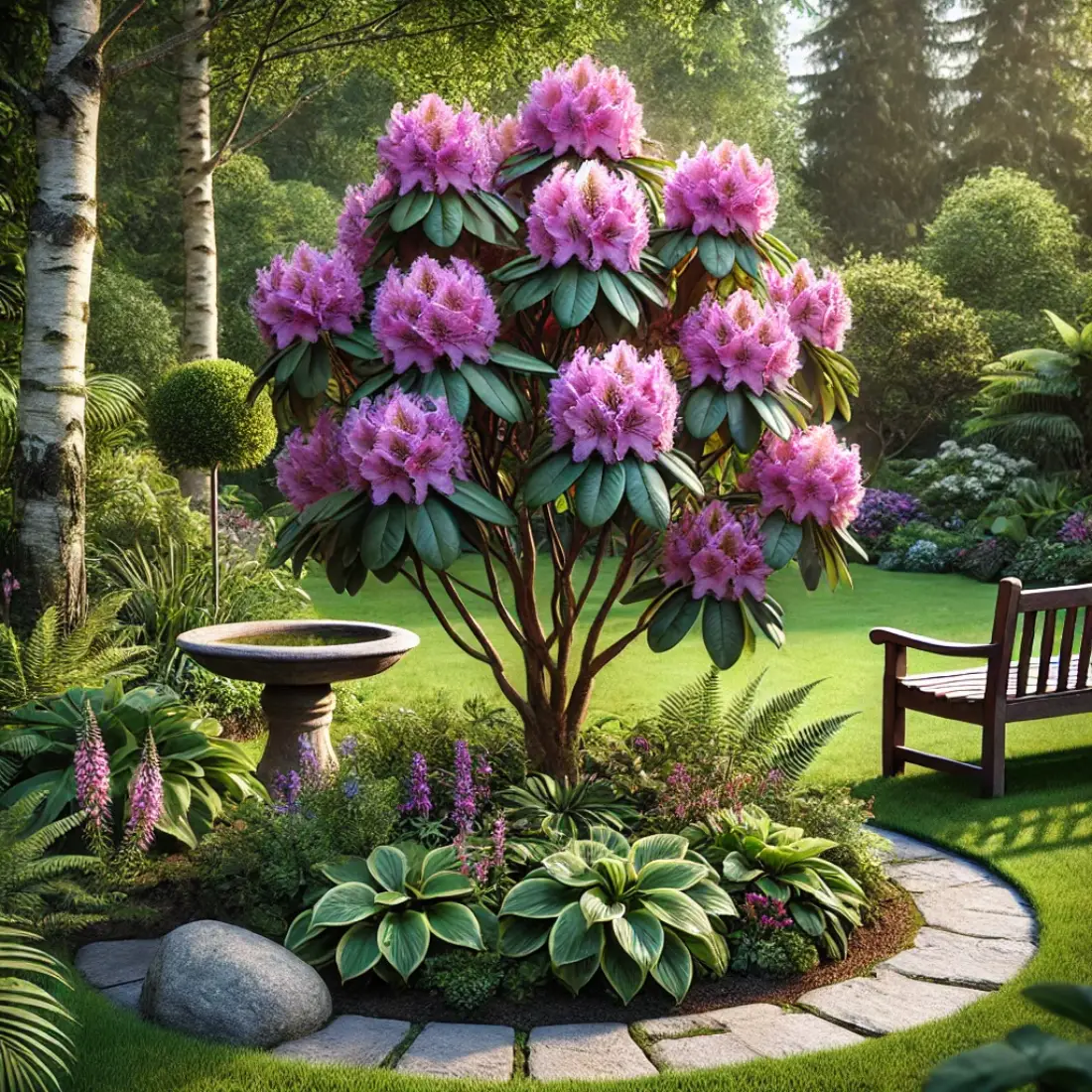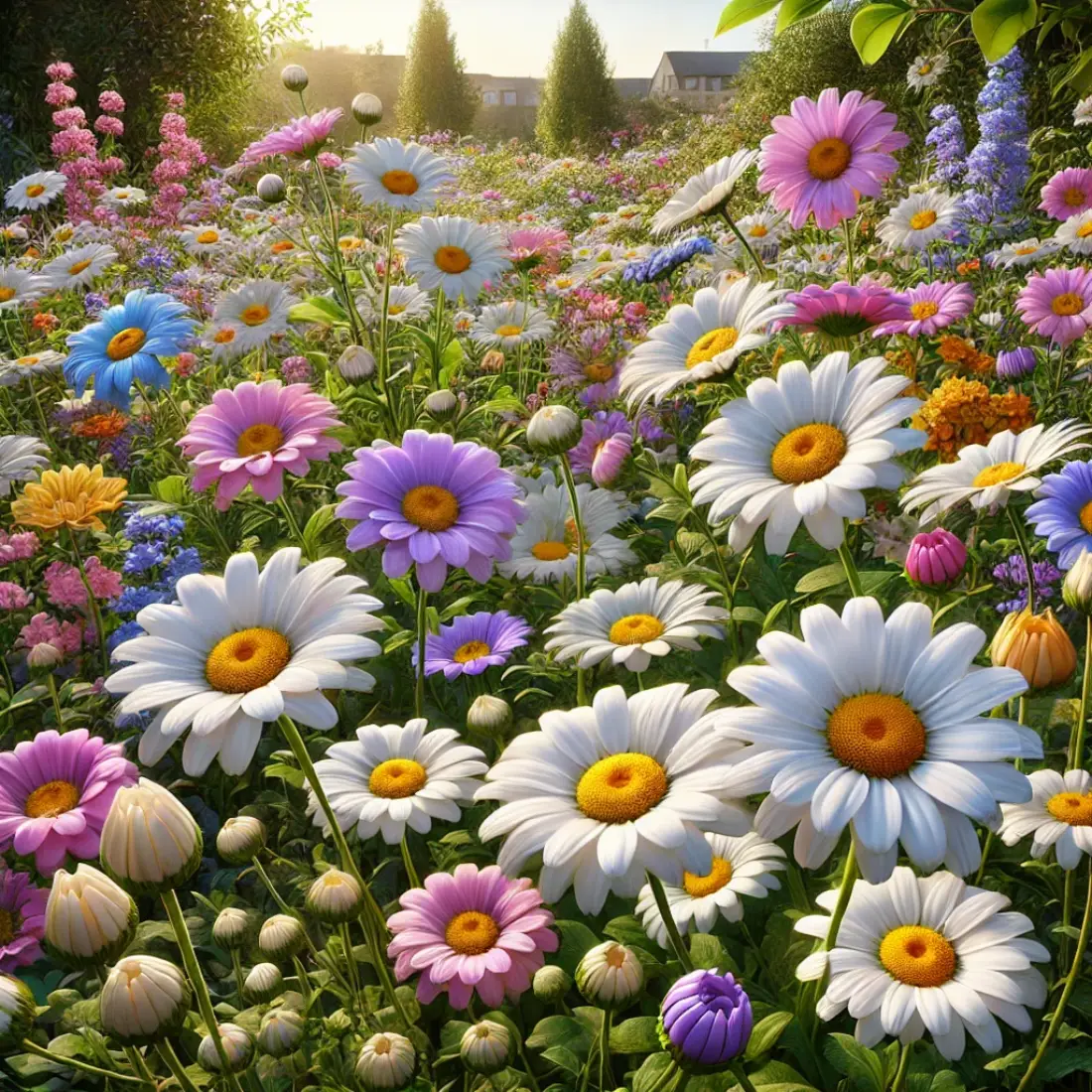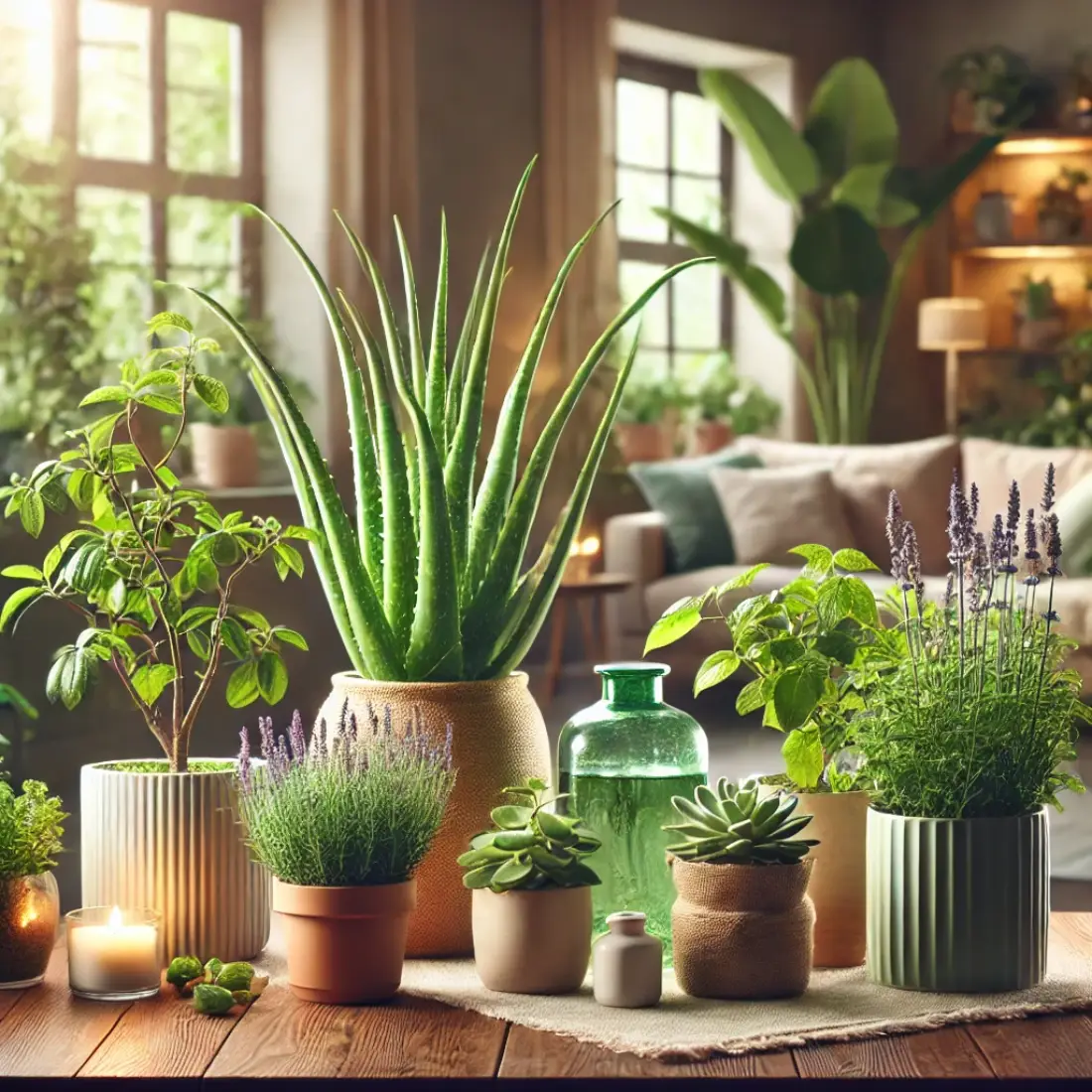Echinacea or coneflower, is a popular perennial known for its vibrant blooms and medicinal properties. Native to North America, it has been used for centuries to boost the immune system. Today, it’s prized for its ornamental value and its ability to attract pollinators like bees and butterflies.
Growing Echinacea at home offers many benefits. Its colorful flowers can enhance any garden, and it’s relatively easy to care for, making it suitable for all gardeners. Echinacea is drought-tolerant and adaptable to various soil conditions.
- Attractive and Versatile: Vibrant flowers enhance any garden.
- Medicinal Benefits: Known for immune-boosting properties.
- Pollinator-Friendly: Attracts bees and butterflies.
- Easy to Grow: Suitable for all gardeners, thrives in full sun and well-drained soil.
- Drought Tolerant: Requires minimal watering once established.
- Perennial: Returns yearly with minimal care.
- Multi-Use: Ornamental, medicinal, and harvestable for various uses.
- Adaptable: Thrives in various climates and soil types.
Table of Contents
Choosing the Right Echinacea Variety
Common Varieties:
- Echinacea purpurea (Purple Coneflower): Most popular variety with vibrant purple-pink flowers.
- Echinacea pallida (Pale Purple Coneflower): Features lighter, more delicate petals.
- Echinacea angustifolia (Narrow-Leaf Coneflower): Known for its slender leaves and compact growth.

Factors to consider:
- Choose varieties that tolerate your region’s temperatures.
- Consider mature height and spread.
- Select varieties that complement other plants.
- Pick varieties with different bloom times for extended flowering.
- Available in purple, pink, white, yellow; choose based on preference.
- Opt for varieties resistant to common pests and diseases.
- For medicinal use, research the variety’s properties.
- For ornamental use, focus on flower size, color, and bloom duration.
Optimal Growing Conditions for Echinacea
Echinacea, or coneflower, thrives best under certain conditions that support its growth and flowering. To ensure optimal growth, Echinacea requires full sun, with at least 6 hours of direct sunlight daily. While it can tolerate partial shade, this may lead to fewer blooms.
Echinacea prefers well-drained soil to prevent root rot and can grow in various soil types, including sandy, loamy, or clay soils. The ideal soil pH for Echinacea is between 6.0 and 7.0, which is slightly acidic to neutral. Moderate watering is essential, particularly during dry periods. Once established, Echinacea is drought-tolerant and requires minimal watering.
Echinacea can tolerate a wide range of temperatures, from hot summers to cold winters. When planting, space the plants 1 to 3 feet apart to ensure adequate air circulation and room for growth.
Echinacea has low nutrient requirements and can suffer from over-fertilization. A light application of compost in the spring is sufficient to promote healthy growth. Additionally, using organic mulch helps retain soil moisture, suppress weeds, and maintain even soil temperature.
In colder climates, applying mulch around the base of the plant in winter can protect the roots from freezing temperatures.
Planting Echinacea
Planting Echinacea, whether starting from seeds or using purchased seedlings, requires careful planning and attention to detail to ensure successful growth and vibrant blooms.
Starting from Seeds
When starting Echinacea from seeds, timing is crucial. Indoors, you should start seeds 8-10 weeks before the last expected frost. If you prefer to sow seeds directly in the garden, wait until after the last frost date. Some Echinacea varieties benefit from cold stratification, which involves placing seeds in a damp paper towel inside a plastic bag and refrigerating them for 4-6 weeks before planting.
For indoor sowing, plant seeds in seed trays filled with a seed-starting mix and cover them lightly with soil. Outdoors, scatter seeds on prepared soil and cover them lightly. Maintain a temperature of 70-75°F (21-24°C) for germination and keep the soil consistently moist but not waterlogged.
Transplanting Seedlings
Transplant seedlings outdoors after the danger of frost has passed and they have developed several true leaves. Choose a sunny location with well-drained soil. Loosen the soil and mix in compost if necessary to improve fertility and drainage. Space seedlings 1 to 3 feet apart to allow for mature growth and plant them at the same depth they were growing in their containers.
Planting Purchased Seedlings
If you are planting purchased seedlings, do so in spring after the last frost or in early fall. Prepare the site similarly to how you would for transplanting seedlings started indoors. Choose a sunny location with well-drained soil, loosen the soil, and mix in compost if needed. Space the plants 1 to 3 feet apart and plant them at the same depth as they were in their nursery pots.
Initial Care
Water newly planted Echinacea thoroughly and keep the soil consistently moist during the establishment period. Apply a layer of organic mulch around the base of the plants to retain moisture, suppress weeds, and regulate soil temperature. Protect young plants from pests and harsh weather conditions as they establish themselves.
Maintenance and Care of Echinacea
Proper maintenance and care are crucial to ensuring that your Echinacea plants remain healthy and vibrant throughout the growing season.
Watering: Echinacea is drought-tolerant once established, but consistent watering is important during the first year. Water deeply but infrequently, allowing the soil to dry out between waterings. During dry spells, water the plants once a week, ensuring the soil is moist but not waterlogged.
Mulching: Applying a layer of organic mulch around the base of the plants helps retain soil moisture, suppress weeds, and regulate soil temperature. Use mulch such as straw, wood chips, or compost, and replenish it as needed.
Fertilization: Echinacea has low nutrient requirements. Too much fertilizer can lead to excessive foliage growth at the expense of blooms. A light application of compost in the spring is usually sufficient. If necessary, use a balanced, slow-release fertilizer sparingly.
Pruning and Deadheading: Regularly deadhead spent flowers to encourage continuous blooming and prevent the plant from self-seeding excessively. Cut back the stems to just above a set of leaves. In late fall, after the first frost, cut back the dead stems to a few inches above the ground to prepare the plant for winter.
Pest and Disease Management: Echinacea is generally resistant to pests and diseases, but it can occasionally be affected by aphids, Japanese beetles, and fungal diseases like powdery mildew and aster yellows. Inspect plants regularly and remove any pests by hand. Use insecticidal soap or neem oil for severe infestations. Ensure good air circulation around the plants to prevent fungal diseases and avoid overhead watering.
Supporting Growth: Echinacea plants typically do not require staking, but in windy areas or if the plants are tall and top-heavy, providing support with stakes can prevent them from toppling over. Planting Echinacea alongside sturdy companion plants can also offer natural support.
Overwintering: In colder climates, apply a thick layer of mulch around the base of the plants in late fall to protect the roots from freezing temperatures. In the spring, remove the mulch to allow new growth to emerge. Echinacea is a hardy perennial and will return each year with minimal care.
Harvesting and Usage of Echinacea
Echinacea, commonly known as coneflower, is valued for both its ornamental beauty and its medicinal properties. Proper harvesting and usage techniques are essential to maximize its benefits.
Harvesting Echinacea
Timing:
- Flowers: Harvest flowers when they are in full bloom, typically mid to late summer.
- Roots: Harvest roots in the fall of the plant’s third year, when they are most potent.
Tools:
- Use sharp, clean scissors or pruning shears for cutting flowers.
- A garden fork or spade is ideal for digging up roots.
Flowers:
- Cut the stems just above a set of leaves, leaving a few inches of stem attached to the flower head.
- Harvest in the morning after the dew has dried but before the heat of the day.
Roots:
- Carefully dig around the base of the plant to avoid damaging the roots.
- Gently lift the plant and shake off excess soil.
- Wash the roots thoroughly to remove any remaining dirt.
Preparing and Using Echinacea
Drying:
- Flowers: Spread the harvested flowers on a screen or hang them upside down in a dark, well-ventilated area. Allow them to dry completely before storing.
- Roots: Slice the roots into thin pieces and lay them out to dry in a similar manner to the flowers.
Storing
- Store dried flowers and roots in airtight containers in a cool, dark place.
- Properly dried and stored Echinacea can last up to a year.
Medicinal Uses:
- Teas: Use dried Echinacea flowers or roots to make herbal teas. Steep 1-2 teaspoons of dried material in hot water for 10-15 minutes.
- Tinctures: Create a tincture by soaking chopped roots in alcohol (vodka or brandy) for 4-6 weeks. Strain and store the liquid in a dark glass bottle.
- Capsules: Grind dried roots into a powder and fill empty capsules for easy consumption.
Ornamental Uses:
- Freshly cut flowers can be used in floral arrangements to add a splash of color and attract pollinators.
- Dried flowers make beautiful additions to dried flower arrangements and crafts.
Wildlife Benefits:
- Echinacea flowers attract bees, butterflies, and other pollinators to the garden.
- In the fall and winter, leave some flower heads on the plants to provide seeds for birds.
Winter Care and Perennial Maintenance for Echinacea
Proper winter care and perennial maintenance are essential to ensure the longevity and health of your Echinacea plants.
Winter Care
In late fall, after the first frost, it’s important to cut back the dead stems of Echinacea to a few inches above the ground. This helps prevent disease and prepares the plant for new growth in the spring. However, you can leave some stems and seed heads standing to provide winter interest and food for birds.
Applying a thick layer of organic mulch, such as straw, wood chips, or shredded leaves, around the base of the plants helps insulate the roots from freezing temperatures. Ensure the mulch is not too close to the plant stems to prevent rot. In areas with harsh winters, consider adding an extra layer of protection, like a burlap wrap or garden fabric, to shield the plants from extreme cold and wind.
Perennial Maintenance
In early spring, remove any remaining mulch and debris from around the plants to allow new growth to emerge. Cut back any stems that were left standing over the winter. Echinacea has low nutrient needs, so apply a light layer of compost around the base of the plants in the spring to provide a slow-release source of nutrients.
Every 3-4 years, it’s beneficial to divide overcrowded clumps in early spring or fall to rejuvenate the plants and promote healthy growth. Carefully dig up the entire plant, separate the clumps with a sharp knife or spade, and replant the divisions at the same depth as the original plant.
Regularly remove weeds from around the plants to reduce competition for nutrients and water, and apply mulch to suppress weed growth. Continue to monitor for pests and diseases throughout the growing season, removing any affected foliage promptly and treating severe infestations with appropriate organic controls.
Water newly divided or transplanted plants thoroughly to help them establish. Once established, Echinacea requires minimal watering, but ensure the soil does not dry out completely during prolonged dry spells.
Supporting Growth
In windy areas or if the plants grow tall and top-heavy, provide support with stakes to prevent them from toppling over. Use soft ties to secure the stems to the stakes without damaging the plant. Regularly remove spent flowers to encourage continuous blooming and prevent self-seeding if not desired. Leave some seed heads in late summer to provide food for birds and allow for natural reseeding if desired.
FAQs About Growing and Caring for Echinacea
When is the best time to plant Echinacea?
The best time to plant Echinacea is in the spring after the last frost or in early fall to give the plants time to establish before winter.
How much sunlight does Echinacea need?
Echinacea thrives in full sun, requiring at least 6 hours of direct sunlight daily. It can tolerate partial shade but may produce fewer blooms.
How often should I water Echinacea?
Water newly planted Echinacea regularly to help it establish. Once established, water deeply but infrequently, allowing the soil to dry out between waterings.
What type of soil is best for Echinacea?
Echinacea prefers well-drained soil and can grow in various soil types, including sandy, loamy, and clay soils. The ideal soil pH is between 6.0 and 7.0.
How do I propagate Echinacea?
Echinacea can be propagated by seed, division, or root cuttings. Seeds can be started indoors 8-10 weeks before the last frost or sown directly outdoors after the last frost.
Should I deadhead Echinacea flowers?
Yes, deadheading spent flowers encourages continuous blooming and prevents excessive self-seeding. However, you can leave some seed heads for winter interest and to feed birds.
How do I protect Echinacea in the winter?
Cut back dead stems in late fall, apply a thick layer of mulch around the base to insulate the roots, and consider additional protection like burlap wraps in harsh winter climates.
What pests and diseases affect Echinacea?
Echinacea is generally resistant to pests and diseases but can occasionally be affected by aphids, Japanese beetles, powdery mildew, and aster yellows. Regular inspection and proper care help prevent these issues.
How do I divide Echinacea plants?
Every 3-4 years, divide overcrowded clumps in early spring or fall. Dig up the entire plant, separate the clumps with a sharp knife or spade, and replant the divisions at the same depth as the original plant.
Can Echinacea be grown in containers?
Yes, Echinacea can be grown in containers. Choose a large pot with good drainage, use well-draining soil, and ensure the plants receive full sun. Regular watering is essential, as container plants dry out faster than those in the ground.












